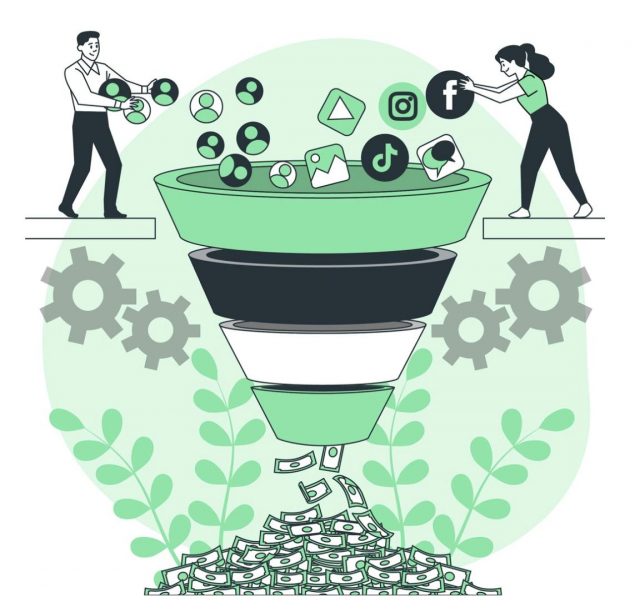If you’re still unsure about where to start, we can help.
With our free tips and guidance, you can build a better digital marketing setup. But if you don’t have the time or resources to manage it all on your own, we can support you. Get in touch to find out how.
Assets are the building blocks of your campaign. They are the elements needed to create campaign landing pages, ads, emails and much more. They include videos, images, HTML emails, social posts, case studies, blogs and print material.
The purpose of this article is to give you some idea of the Ramadan campaign assets you should be looking to produce as a minimum. These recommendations are for guidance only; the level of assets you’ll need will depend on your budget and the scale of your Ramadan campaign.

Videos
Did you know that 80% of mobile users go online to watch short-form videos? Social media marketing videos generate 1200% more shares than photo and text content combined. Videos are vital for a successful marketing or fundraising campaign.
To create impactful videos, you’ll need raw footage showing your work on the ground. Case studies and beneficiary testimonials also perform very well. For your Ramadan campaign you’ll want:
- A minimum of 3 videos for each of your main projects.
- Videos should be Ramadan themed with call-to-actions.
- Video length should be 60 seconds max (with lots of shorter/punchier versions of the same in 30 sec, 15 sec, and 6 sec.)
- All videos should have subtitles throughout.
- All videos should have a uniform end screen with your logo, website URL and a key call-to-action specific to that video.
During Ramadan, videos related to food projects tend to do well, so it’s a good idea to have one appeal for food. But the rest of your videos must focus on the other projects/appeals you’ll be pushing for.


Support Services
Explore our services to see how we can support you this Ramadan.
We work with clients of all sizes, ambitions, and expectations, and with budgets that start from as little as £150pm to over £1.5m each year. Explore our simple-to-understand packages that take the pressure off this Ramadan, so that you can focus on what you do best.
Images
It’s no exaggeration that a picture tells a thousand words. Images aren’t just vital design elements. An impactful image will grab attention and has the power to carry your Ramadan campaign to its success.
You’ll need images for your Ramadan landing pages, social posts, ads and print material. Here’s a tick-list to help you collate suitable images that can be used for multiple campaign types:
- Images should be high-resolution and unedited.
- Images should depict people i.e. beneficiaries and field workers/staff.
- Field workers/staff should be shown on the ground, conducting projects or aid distributions etc.
- Beneficiaries should be depicted in a dignified, positive light.
Do ensure that all your images are saved by project on a shared folder like Google Drive so team members can download them when required.
HTML emails
If you’re planning to run a Ramadan campaign this year, email marketing needs to be an integral part of it. Email is still one of the best-converting channels. But the competition is getting tougher, so you’ll want to plan well. Here’s a tick-list of to-dos to help you get this right:
- Create 5 x HTML emails to cover the period between just before Ramadan and Eid al-Fitr.
- Use an HTML email-sending platform like Mailchimp.
- Focus on key periods/subjects such as pre-Ramadan, the last 10 days, Laylatul Qadr, Eid al-Fitr etc.
- Ensure your emails are mobile-optimised. This means concise copy, smaller images, and keeping CTAs above the fold.
- Video content is proven to boost open and click-through rates considerably. When using videos in your emails, ensure the play icon is displayed on the video thumbnail.
- Be sure to embed videos featured in your emails onto your website landing pages. All links should be directed to your website rather than to YouTube or other sites – which would be a sure way of losing your audience!
- Use animations or effects such as GIFS and HTML5 animations to grab attention.
- And remember, user-generated content (UGC) such as feedback, testimonials and case studies help build credibility.
For more detailed information and everything you need to know about creating Ramadan emails, read our article How to Create Ramadan Emails.
Case studies
Case studies are vital. They demonstrate transparency and the impact your charity is making through success stories. If you want your donors to continue supporting your work, you’ll need to showcase beneficiary success stories to show them where their donations are going.
For your Ramadan campaign, you must include case studies across your Ramadan pages, HTML emails and social media posts. But what does a successful case study look like? Here’s a tick-list to help you get this right:
- Describe the problem, the solution and the outcome.
- Include testimonials from beneficiaries.
- Include beneficiary names and regions to make the stories emotive and personal.
- Case studies must come with images and even a video if possible.
Ideally, you should have one case study for each of your main projects. So, if you’re focusing on three projects over Ramadan, you should have three case studies. But this is the minimum. More is always better.
Blogs & articles
Producing wider content is a way of giving back to your supporters and donors. It will help you engage with them and even build new audiences, especially during pre-Ramadan.
By posting interesting Ramadan-related blogs and articles, you’ll give your charity the best chance to attract visitors and keep them on your site for longer. Here are some ideas for blogs/articles that perform well over Ramadan:
- Motivational Ramadan preparation blogs with Duas and hadiths.
- Healthy eating and wellbeing tips.
- Information on Zakat and Zakat giving guides.
- Links to your annual reports showing the impact of your work.
You’ll want to conclude each blog by including a call-to-action so visitors can take action before they leave the page.
Be sure to also include call-to-actions and links directing visitors to your Ramadan landing pages across all of your blogs and articles. These will minimise drop-offs after your audience has read the blog.
To conclude
We hope you’ve found this guide helpful. Remember, by mid-December 2024 you should have all your marketing channels and assets planned. And you should have a clear idea of what you need to have prepared for your upcoming Ramadan campaign. The next 4-6 weeks in the run-up to Ramadan will involve arranging all your required assets for the launch of your campaign.

Is your website ready for Ramadan?
You don’t want your website depriving you of visitors during the most critical time of the year. Request our free website health-check to identify common issues with speed, user experience, and performance. We’ll deliver this in a clear report along with some basic recommendations and quick fixes.
Learn more about health-checks
Frequently asked questions
-
One of the key things we do with our clients is review all their Ramadan pages from last year so that we can build on our learnings. For more tips, read our Ramadan Campaign Planning Guide here.
-
The competition is getting tougher for Muslim charities every year and the changing digital landscape means it’s getting more tricky to avoid those spam filters. Here, we’ve put together a guide to help you prepare an effective email marketing campaign for Ramadan.
-
4-5 months in advance, ideally, but really as soon as possible. If you book a call with us today, we’ll give you exclusive access to our Ramadan 2024 Insights Report. Also, we’ve currently got a 50% offer on our Growth Plan if you sign up with us before the end of December. Find out more here.
Start a Conversation
Request a call-back to see how we can support your digital growth.















